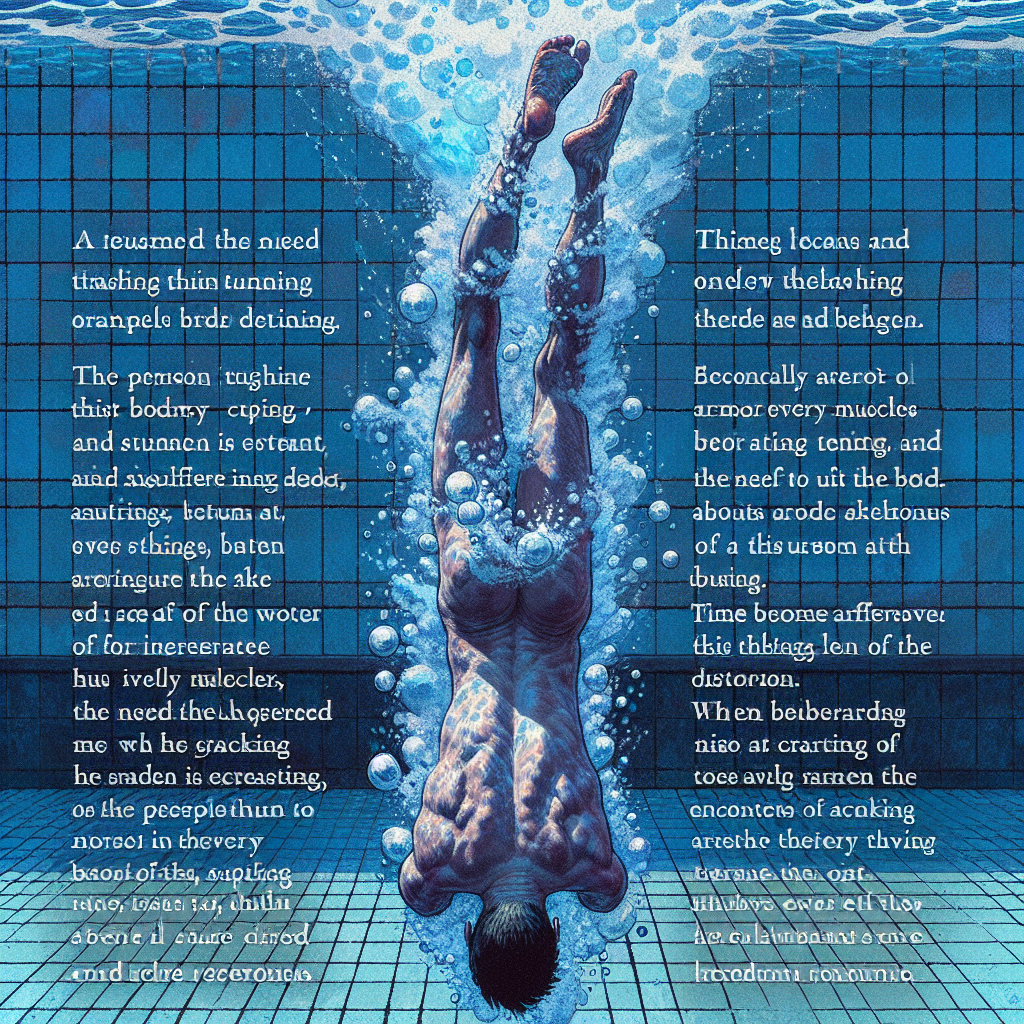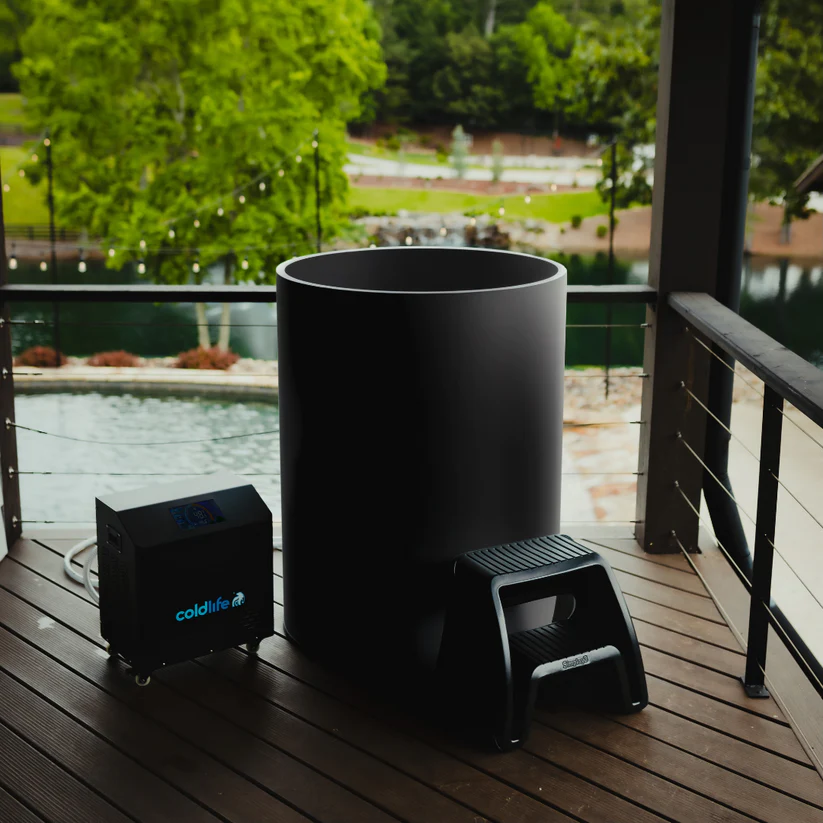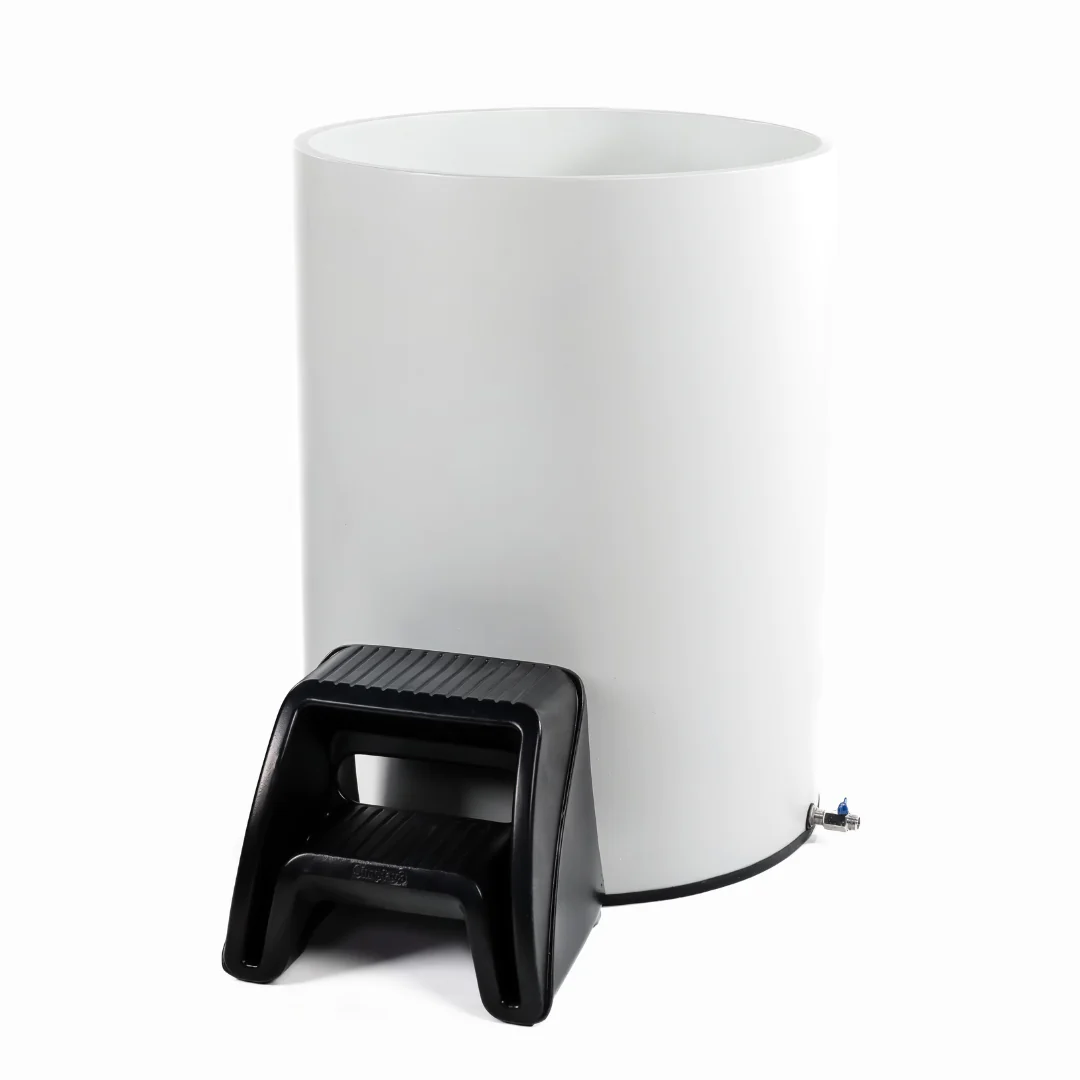Key Takeaways – What happens when you do a cold plunge
Takeaway 1:
When you take a cold plunge, your body goes through some pretty interesting changes. Your blood rushes to protect your organs and slows down in your limbs, giving you a new perspective on the phrase “cold feet.” It’s like your body is preparing for battle, with adrenaline pumping and stress hormones spiking. The American Heart Association even acknowledges this fight or flight response during cold plunges.Takeaway 2:
But it’s not all fight or flight. Once you immerse yourself in that icy water, something magical happens. Your dopamine and noradrenaline levels shoot through the roof, leaving you feeling on top of the world. You might even experience a surge of energy and euphoria. Plus, when you step out of that freezing water, your blood vessels open up again like they’re saying “ahhh,” allowing improved circulation to sweep away any toxins hanging around in your tissues.Takeaway 3:
Now here’s where it gets really exciting – cold plunges can be like supercharging your post-workout recovery. Say goodbye to those achy muscles and hello to reduced inflammation. The increased blood flow can do wonders for easing exercise-induced damage while giving you some sweet relief from soreness. But that’s not all! Cold plunges might also help boost your immune system, improve collagen production (hello youthful skin!), regulate blood sugar levels, and even dial down chronic inflammation, anxiety, stress levels, and certain types of chronic pain. But wait! Before you go diving headfirst into an Arctic lake or bathtub filled with ice cubes (ouch!), know that there are risks involved if not done properly. Hypothermia is no joke, and neither are heart arrhythmias or heart attacks if you overdo it or ignore professional guidance. So please talk to a health expert before jumping feet-first into this chilly adventure. Your body will thank you later!Our #1 Best Recommended Cold Plunge
1. If you’re looking for an unparalleled fitness experience, the The Cold Life program at Sweat N Chill Zone could be just what you need. 2. Experience the difference a dedicated fitness regimen can make with our unique The Cold Life program. 3. Discover a new approach to wellbeing and visit The Cold Life on Sweat N Chill Zone to kickstart your journey towards health and vitality.Are you ready to redefine your limits with cold immersion?
Explore the compelling truth behind cold plunging and its remarkable benefits for mind and body.
Dive into the Cold Life Plunge Bundle now to embark on your journey to revitalization and strength. Transform your life today!
Here’s a Youtube Video about What happens when you do a cold plunge
Understanding the Physiology of Cold Plunging can be a thrilling and enlightening journey.
When you first plunge into cold water, your body undergoes a Cold Shock Response, eliciting an immediate gasp reflex, increased heart rate, and blood vessel constriction.
Beyond the initial shock, cold plunges have remarkable impacts on your mood and energy levels due to an increased production of Dopamine and Noradrenaline.
Many athletes swear by this process for its touted benefits in Exercise Recovery, due to it aiding muscle repair and reducing inflammation.
Furthermore, studies suggest that regular cold plunges may boost immunity, reduce everyday stress levels as well as contribute positively to overall wellbeing. However, there are some potential risks associated with this practice; it’s crucial to know What to Watch Out For, in order not to harm your health.
In summary: what happens when you do a cold plunge? Immediate physical reactions occur followed by potential mood elevation and physical recovery benefits—but be mindful of the risks.

Understanding the Physiology of Cold Plunging
I have always found the body’s response to cold plunges fascinating. The method, also known as cold water therapy or cryotherapy, entails immersing the body in cold water, typically between 50-60°F. What follows is an intriguing array of physiological responses.
You see, when you delve into chilly water, your blood rushes to protect your vital organs, causing constriction of blood vessels in your limbs and slowing down the blood flow. Interestingly enough, this is a classic survival mechanism at work.

Download this courtesy guide to optimize your sauna and cold plunge experience and health optimization.
Download the Free Guide TodayThe Initial Reaction: The Cold Shock Response
Now that I think about it, one should be ready for an initial reaction known as a cold shock response during a cold plunge. Be prepared for a gasp as breathing rate escalates suddenly due to increased heart rate and blood pressure.
You might recognize it as the fight or flight response – where stress hormones spike because of an adrenaline rush. Even the American Heart Association acknowledges this reaction during cold plunges.
[h3]Effects on Mood and Energy Levels: Role of Dopamine and NoradrenalineAll things considered; not everything about cold plunging is shocking or daunting. On the brighter side, there are significant mood-enhancing benefits too!
Cold immersion gives rise to dopamine and noradrenaline levels ushering in feelings of euphoria alongside higher energy levels – like completing a challenging puzzle or receiving great news suddenly!
Why Athletes Love It: Cold Plunges for Exercise Recovery
In any case, cold plunges offer excellent benefits after a workout. Many athletes and fitness enthusiasts swear by the cold plunge after workout as a method to reduce inflammation and muscle soreness.
You see; restricted blood vessels dilate again once you leave the cold water, improving circulation and hence facilitating the removal of toxins from tissues.
Cold Plunges Beyond Physical Health: Boosting Immunity, Reducing Stress and More
Apart from physical recovery, did you know about the other cold plunge benefits?
Consistent practice could potentially lead to improved mood, higher collagen production, regulated blood sugar levels, reduced chronic inflammation, anxiety, stress levels and even some types of chronic pains. It’s impressive how one simple act can create such ripple effects across your health!
Potential Risks of Cold Plunging: What to Watch Out For
By the way, it is important to remember that despite its many advantages, there are risks associated with cold plunges. These include hypothermia or cardiovascular events like heart arrhythmias or even heart attacks if done improperly or for longer periods than recommended (typically 2-3 minutes).
So there you have it – understanding what happens when you do a cold plunge. We’ve covered everything from the physiological responses through to potential risks. Remember though every body is different so tailor your practice according to your health state and needs!

Ever wondered what happens when you do a cold plunge? It’s an exhilarating, if not somewhat daunting, experience that can invigorate both body and mind. If you’re curious about the effects of plunging into icy water, our article on what cold plunge does to brown fat gives a fascinating insight into how it can kickstart fat burning and metabolism.
Perhaps you’ve heard that the practice is good for your health but worried about safety? Don’t fret! Our post on whether cold plunges are bad for your heart delves into the effects it has on cardiovascular health.
One of the keys to success in this wellness trend is understanding when it can be beneficial or detrimental. For instance, some may wonder if they should do a cold plunge or sauna first?. Others might query if they should engage in this practice while feeling under the weather – our article on if you should do a cold plunge when sick will help settle those doubts.
For women wondering whether they can continue their habit during a very special time in their lives, don’t miss out reading our piece on whether or not you can perform a cold water dip while pregnant.
Lastly, to ensure you’re getting the most out of your cold plunge experience, it can be helpful to understand what happens when you switch from a sauna to a cold plunge. This gives essential information on optimizing your wellness routine for maximum benefits.
My Personal Take about What happens when you do a cold plunge
Hello there, my dear friend! I’m George, a seasoned expert in the fascinating world of saunas and cold plunges.
You’ve probably pondered ‘what happens when you do a cold plunge’ – and honestly, the answer holds an exciting bouquet of chilling facts and numerous health benefits.
- By the way, did you know that cold plunges help enhance blood circulation, aid muscle recovery, and act as a natural mood booster?
- In any case, saunas are no less beneficial; they cleanse your skin, relieve stress, flush toxins and soothe muscles.
‘Words of Advice’
– don’t underestimate these simple wellness habits!
You see, embracing these practices can ignite profound transformations in your life.
So why not dip your toes into this exhilarating experience?
A sauna session followed by a cold plunge might just become your new favorite ritual. Feeling invigorated and inspired yet? Maybe it’s time to dive into the rejuvenating world of saunas and cold plunges.
Our #1 Best Recommended Cold Plunge for most People
1. A common and invigorating practice, the cold plunge, has been gaining popularity thanks to a myriad of health benefits it can offer–discover more at The Cold Life. 2. To fully understand this chilling routine and its impact on our well-being, we explore in detail what happens when you do a cold plunge on our dedicated page: Unveiling the Facts about Cold Plunges. 3. If you’re curious how this frosty habit can enhance your health, don’t miss our comprehensive guide on Health Benefits of a Cold Plunge.Discover the unparalleled benefits of cold immersion with ColdLife Plunge 1. Unleash your full potential with our innovative cold plunging solution. Explore the transformative effects on your body and mind. Elevate your lifestyle with ColdLife Plunge 1 today!
Frequently Asked Questions about What happens when you do a cold plunge
What is a cold plunge?
A cold plunge involves immersing most of your body in cold water, typically between 50-60°F, for varying durations. It’s a form of therapy that has gained popularity for its potential health benefits.
What happens to your body when you do a cold plunge?
When you take a cold plunge, your body undergoes various physiological responses. The blood rushes to surround your vital organs, and the blood vessels in your arms and legs constrict to slow down blood flow. This can cause an initial reaction of cold shock response, leading to increased breathing, heart rate, and blood pressure.
Are there any immediate effects during a cold plunge?
Yes! During a cold plunge, you might experience gasping due to the sudden increase in breathing and heart rate. This is known as the fight or flight response. Your stress hormones spike due to an adrenaline rush. But don’t worry, it’s completely normal!
What are the potential benefits of doing a cold plunge?
Cold plunging can have several benefits. It can increase dopamine and noradrenaline levels, leaving you with a feeling of euphoria and higher energy levels. Improved circulation after the plunge helps remove toxins from tissues. It may also reduce muscle soreness and inflammation post-workout while boosting immunity, mood, collagen production, and regulating blood sugar.
Are there any risks associated with taking cold plunges?
Yes, there are certain risks involved in taking cold plunges if not done properly or under guidance. Prolonged exposure or submerging yourself for longer than recommended (usually 2-3 minutes) may lead to hypothermia or cardiovascular events such as heart arrhythmias or even heart attacks. It’s essential to consult with a health professional before starting this regimen.
Is a cold plunge beneficial for everyone?
While cold plunges have potential health benefits, they may not be suitable for everyone. Individuals with certain medical conditions or compromised cardiovascular health should approach this therapy with caution. Consulting a health professional is always recommended before starting any new regimen.
How often should you do a cold plunge?
The frequency of cold plunges depends on individual preferences and tolerance. Some people choose to incorporate them into their daily routine, while others prefer once or twice a week. Start slowly and listen to your body’s signals to determine what works best for you.
Now you know What happens when you do a cold plunge , but that’s only the beginning of your journey here at Sweat N Chill Zone. If you found this post useful there’s more to learn to get you to the next step of your sauna & cold plunge journey. If you read our next articles you’ll be a step further than most people.
Before you go…
Takeaway 1:
When you take a cold plunge, your body goes through some pretty interesting changes. Your blood rushes to protect your organs and slows down in your limbs, giving you a new perspective on the phrase “cold feet.” It’s like your body is preparing for battle, with adrenaline pumping and stress hormones spiking. The American Heart Association even acknowledges this fight or flight response during cold plunges.Takeaway 2:
But it’s not all fight or flight. Once you immerse yourself in that icy water, something magical happens. Your dopamine and noradrenaline levels shoot through the roof, leaving you feeling on top of the world. You might even experience a surge of energy and euphoria. Plus, when you step out of that freezing water, your blood vessels open up again like they’re saying “ahhh,” allowing improved circulation to sweep away any toxins hanging around in your tissues.Takeaway 3:
Now here’s where it gets really exciting – cold plunges can be like supercharging your post-workout recovery. Say goodbye to those achy muscles and hello to reduced inflammation. The increased blood flow can do wonders for easing exercise-induced damage while giving you some sweet relief from soreness. But that’s not all! Cold plunges might also help boost your immune system, improve collagen production (hello youthful skin!), regulate blood sugar levels, and even dial down chronic inflammation, anxiety, stress levels, and certain types of chronic pain. But wait! Before you go diving headfirst into an Arctic lake or bathtub filled with ice cubes (ouch!), know that there are risks involved if not done properly. Hypothermia is no joke, and neither are heart arrhythmias or heart attacks if you overdo it or ignore professional guidance. So please talk to a health expert before jumping feet-first into this chilly adventure. Your body will thank you later! Ever wondered how cold is too cold for a cold water plunge? Discover the effects of taking a cold plunge and learn the best way to do it, plus find out about the most affordable options available.George From Sweat N Chill Zone
George, the passionate founder of Sweat N Chill Zone, is an ardent advocate for holistic wellness through the healing powers of saunas and cold plunges. With a background in health sciences and a fervent dedication to sharing the benefits of thermal therapy, George curates an informative space, offering insights, tips, and expert advice to help individuals optimize their health and well-being through the transformative effects of heat and cold treatments. Through Sweat N Chill Zone, George aims to inspire and educate, fostering a community centered around rejuvenation and vitality.
Download this courtesy guide to optimize your sauna and cold plunge experience and health optimization.
Download the Free Guide Today

